AVISO: Infinity N5.2 y N5 FAQ 0.0.0
La Wiki se ha actualizado para incluir los cambios de la versión N5.2 y las preguntas frecuentes de la versión v0.0.0.
Lista de páginas Wiki actualizadas en la versión N5.2.
Diferencia entre revisiones de «Condiciones Generales de Movimiento»
| Línea 39: | Línea 39: | ||
| − | {{ | + | {{remember-start}} |
Once declared, Troopers always reach the end of their Movement, even if they enter a ''[[Null]]'' or ''[[Immobilized]]'' state due to successful enemy ''[[Attack]]s'' along the way. | Once declared, Troopers always reach the end of their Movement, even if they enter a ''[[Null]]'' or ''[[Immobilized]]'' state due to successful enemy ''[[Attack]]s'' along the way. | ||
| − | {{ | + | {{remember-end}} |
| Línea 62: | Línea 62: | ||
The Fusilier then declares the second Short Skill of his Order, another BS Attack. | The Fusilier then declares the second Short Skill of his Order, another BS Attack. | ||
| − | In the subsequent Face to Face Roll, the Zhanshi suffers the Partial Cover MODs, however he wins the Face to Face Roll, while the Fusilier fails his Saving Roll. Then, the Fusilier would end his Order in Unconscious state behind Total Cover, where he | + | In the subsequent Face to Face Roll, the Zhanshi suffers the Partial Cover MODs, however he wins the Face to Face Roll, while the Fusilier fails his Saving Roll. Then, the Fusilier would end his Order in Unconscious state behind Total Cover, where he finished his movement. |
{{image | name=eng-move-example-4-1024.jpg | style=512border }} | {{image | name=eng-move-example-4-1024.jpg | style=512border }} | ||
Revisión del 10:03 13 may 2020
- When moving Troopers around the battlefield, players must measure the complete route (including, for example, any detour to avoid obstacles) and must always use the same part of the base for their measurements.
- MOV values indicate the maximum distance the unit can move, but there is no minimum. Troopers do not have to exhaust their movement when they declare Move.
- A Trooper can move over any scenery item whose height is equal to or lower than the height of the Trooper’s Silhouette Template, with no need to declare Climb or Jump.
- This vertical movement is not taken into account when measuring how far the Trooper moves, but the Trooper counts as moving up and over the obstacle for the purposes of LoF.
- A Trooper can move through allied Models, Markers, and Tokens, whose Silhouette Template height is equal to or lower than the height of the Trooper’s Silhouette Template. The Trooper cannot end their movement within the allied Model, Marker, or Token.
- Troopers have a LoF arc of 360º while they are moving.
- After Moving one of your models, you can leave it facing any direction.
- A Trooper's Movement ends automatically whenever he enters Silhouette contact with an enemy, even if the specified movement route is cut short as a result.
- By performing any Skill or ARO with the Movement Label, a Trooper may enter or leave Prone State at the start of his Movement at no cost. Remember that Troopers have reduced mobility while Prone.
- Independently of the type of movement performed (Move, Jump, Climb, etc.), the movement cannot, in any way, cause the Trooper to fall. If the Trooper cannot reach a new location with their Move, Jump, Climb… they do not perform the movement and perform an Idle instead.
- Once declared, Troopers always reach the end of their Movement, even if they enter a Null or Immobilized state due to successful enemy Attacks along the way.
Move: Ladders and Stairs
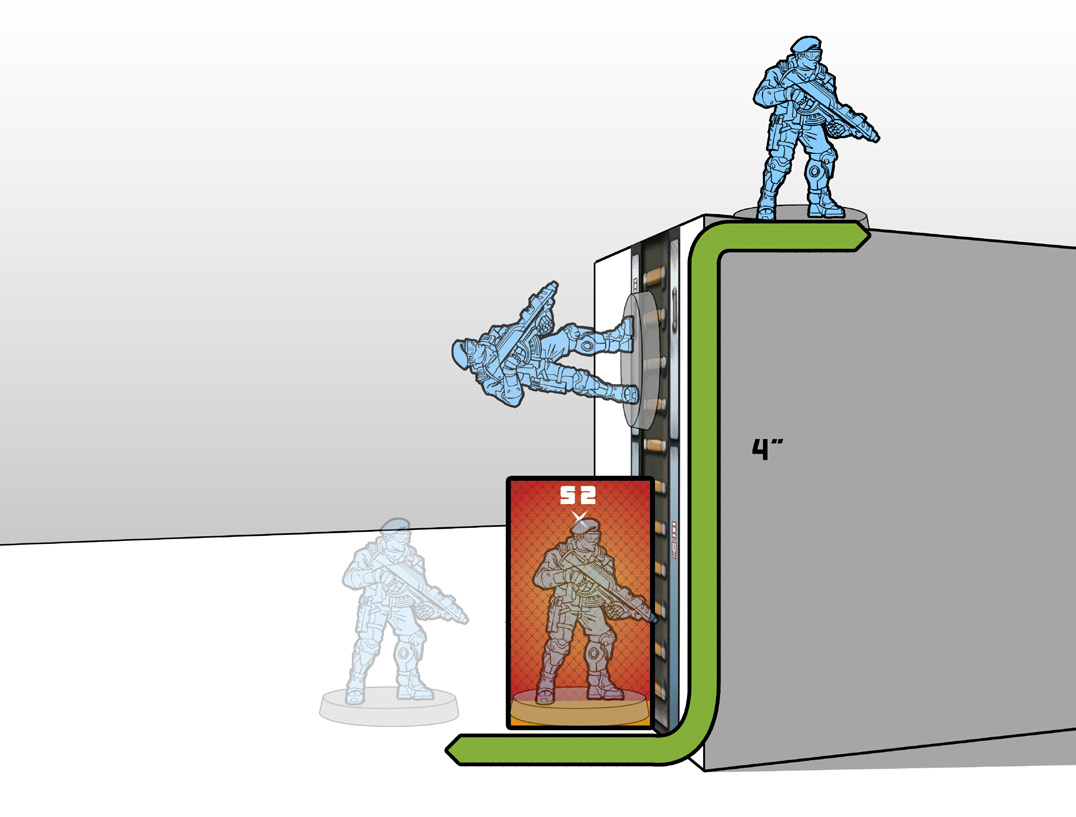
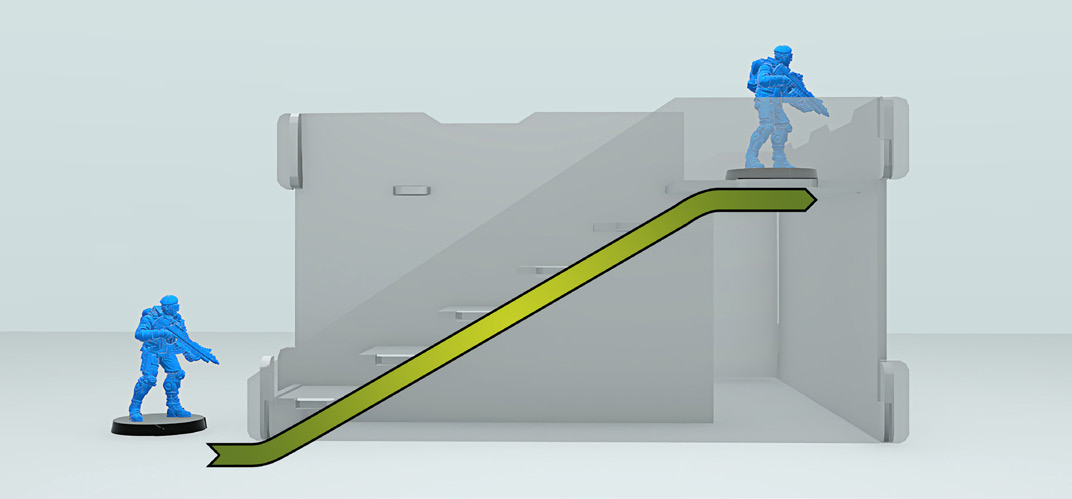
Those pieces of scenery representing stairs and ladders allow Troopers to treat those vertical or diagonal surfaces as a horizontal surface. Therefore, the Trooper can use any Skill or ARO with the Movement Label without needing to declare Jump or Climb, and without applying restrictions for Jump or Climb. Movement distances are measured along the surface the Trooper moves along, as seen in the diagram.
Move and Obstacles
Example of Movement over an obstacle lower than the height of the Silhouette.
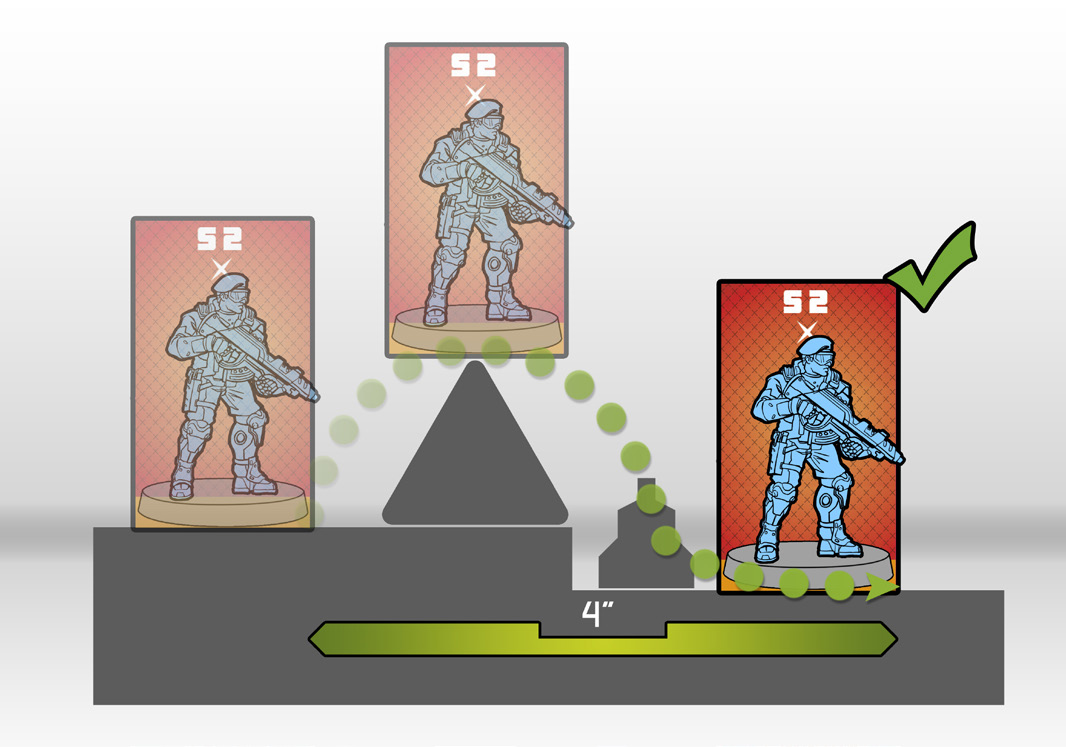
The Trooper may bypass the obstacle without declaring Jump or Climb, since the obstacle’s height is equal to or lower than the height of the Trooper’s Silhouette Template, on both sides.

Conversely, in the second picture, the Trooper may not pass over the obstacle without declaring Jump or Climb, since the obstacle is higher than the height of the Trooper’s Silhouette Template on one side.
Once declared, Troopers always reach the end of their Movement, even if they enter a Null or Immobilized state due to successful enemy Attacks along the way.
Example

In his Active Turn, the Fusilier is leaning against a wall in Total Cover. He does not have LoF to the Zhanshi, on the other side of the building. The Fusilier declares his first Short Skill: Move.
Therefore, the Player will measure the trajectory’s distance, determine his direction and path, then move the Fusilier’s base so that his base peeks around the corner to gain LoF to his target while still in Partial Cover.
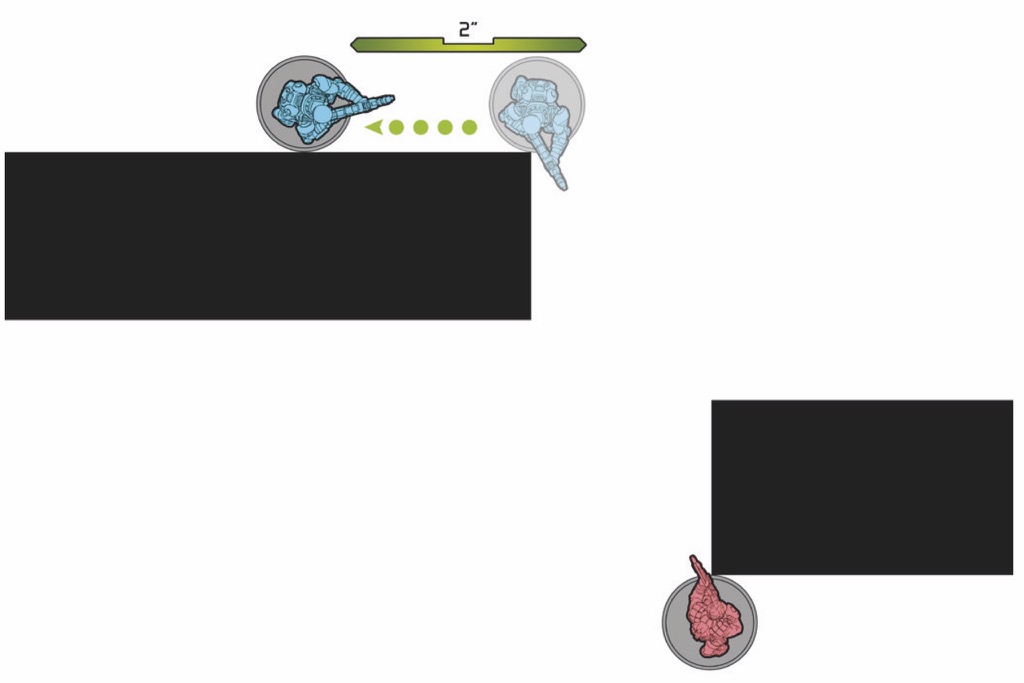
Once he has seen the Zhanshi, the Fusiliers’ model returns to his original position in Total Cover. His Move declaration will take him to the corner and back.

Since the Zhanshi also gains LoF to the Fusilier, he declares his ARO: BS Attack.
The Fusilier then declares the second Short Skill of his Order, another BS Attack.
In the subsequent Face to Face Roll, the Zhanshi suffers the Partial Cover MODs, however he wins the Face to Face Roll, while the Fusilier fails his Saving Roll. Then, the Fusilier would end his Order in Unconscious state behind Total Cover, where he finished his movement.

Examples from Move
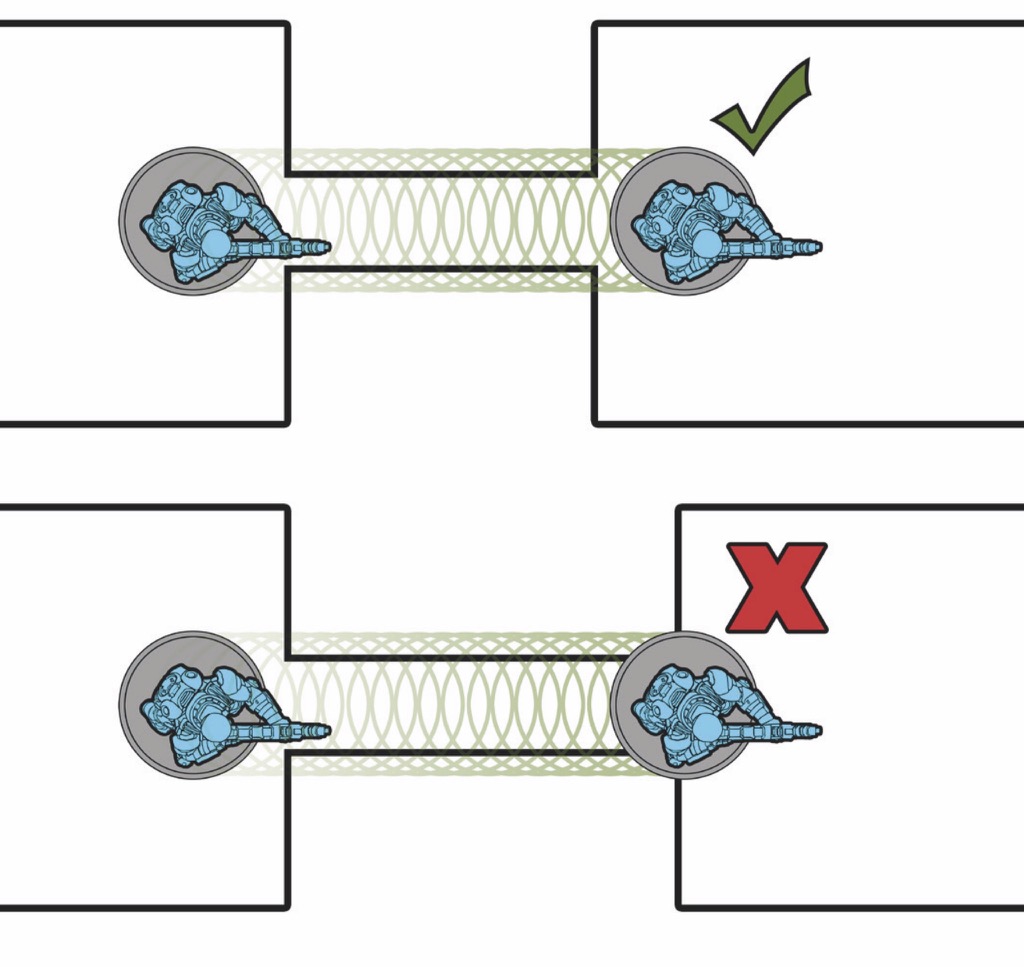



Although in both cases the Distance covered is 8 inches, in case B, it is not possible to carry out the movement because there is no valid surface at the end of the first Movement value.